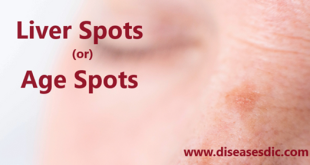What is Keratosis pilaris?
Keratosis pilaris (KP) is a very common skin condition, typically seen in children and young adults. The term ‘keratosis’ means that there is too much keratin, the protein that protects skin from infections and other harmful things, while ‘pilaris’ comes from the Latin for hair (pilus). In keratosis pilaris, many small (1 to 2 mm across) plugs can be seen blocking the hair follicles (hair roots) on the upper and outer parts of the arms and thighs. This can look like goose bumps but can be rough to touch. Keratosis pilaris appears when extra keratin accumulates in the hair follicles. This usually starts in childhood and becomes more obvious during teenage years and in adulthood. This condition often gets worse in winter than summer for various reasons, such as the skin often gets dry during winter and the skin rubs more against thick clothing. Keratosis pilaris may be associated with other skin diseases such as ichthyosis vulgaris and atopic eczema. It is harmless and affects more than half (50-70%) of teenagers and many (approximately 40%) adults.
Different Types of Keratosis Pilaris
Depending on the type of bumps seen, the types of keratosis pilaris are classified into the following:
- Keratosis Pilaris Rubra: These are characterized by red bumps that are inflamed and are usually found on the arms, legs, and head.
- Keratosis Pilaris Alba: The bumps in this type of keratosis pilaris are rough and do not have any associated irritation.
- Keratosis Pilaris Rubra Facelli: A reddish rash on the cheeks, with or without bumps, is seen in keratosis pilaris on the face.
Epidemiology
Around 30 to 50 % and 50 to 80 % of all adolescents are thought to be affected by KP globally. It frequently occurs in otherwise healthy people and is more common in women than in men. People of all races have the skin condition frequently, and no race has a higher risk of having KP. KP can emerge at any age, however it often does so within the first ten years of life and is more common in young children. Before the age of 30, the illness typically progressively gets better, but it can last longer.
Pathophysiology
Similar to the aetiology, the pathophysiology of keratosis pilaris is not well known. The most widely recognised explanation postulates that an infundibular plug forms as a result of abnormal follicular epithelial keratinization. Erythema and scaling develop around the follicular opening as a result of these keratotic plugs. Inflammatory papules, a defining characteristic of keratosis pilaris, are also produced as a result of the keratin plugs. Additionally, there are coiled hairs within the lesions, which may contribute to the keratinization and inflammation of keratosis pilaris.
Causes
The exact causes are not known but, as a large percentage of those affected by chicken skin have family members who also have the condition (if one twin has Keratosis Pilaris the other one usually has it too), it is highly likely that it is genetic and inherited.
What we do know is that the bumps form as a result of an overproduction of keratin. Keratin is the protein that gives body tissue its stability and is the building block of our hair and nails.
In cases of Keratosis Pilaris, the excess of keratin produced collects in, and blocks, the hair follicles. Skin thickens as a result and bumps turn into hard plugs.
You are more likely to develop keratosis pilaris if you have:
- A family history of it
- Asthma
- Dry skin
- Eczema (also called atopic dermatitis)
- Excess body weight
- Hay fever
Causes of keratosis pilaris
Symptoms of Keratosis Pilaris
- There is a rough, goose-flesh appearance of the skin.
- There are small papules of keratosis that are one to two millimetres in diameter.
- There may be some erythema around the lesions or they may be a normal skin colour. A coiled hair may be apparent beneath the papule.
- Pruritus may also be present
- Keratosis pilaris can affect all skin surfaces where hair grows. However, it is more common on the proximal and extensor surfaces of extremities and convex areas such as cheeks and buttocks.
Goose flesh appearance of the skin
Keratosis Pilaris Complications
Complications are infrequent since it’s primarily a cosmetic skin condition.
However, temporary skin discoloration called post-inflammatory hypopigmentation (lighter than the regular skin color) or hyperpigmentation may occur after the inflamed, red bumps have improved or after a temporary flare.
Permanent scarring may rarely occur from picking, overly aggressive treatments, or other inflammation.
What increases a person’s risk of getting keratosis pilaris?
You are more likely to develop it if you have one or more of the following:
- Close blood relatives who have keratosis pilaris
- Asthma
- Dry skin
- Eczema (atopic dermatitis)
- Excess body weight, which makes you overweight or obese
- Hay fever
- Ichthyosis vulgaris (a skin condition that causes very dry skin)
- Melanoma and are taking vemurafenib (Zelboraf®), a targeted therapy medicine approved to treat melanoma that has spread
Diagnosis
Keratosis pilaris is diagnosed based on medical history and a physical exam. A skin doctor, known as a dermatologist, can typically confirm the diagnosis just by looking at the affected area. Factors that go into the diagnosis include:
- Your age
- What it looks like
- Which areas it affects
No formal testing exists to confirm the diagnosis.
Treatment for Keratosis Pilaris
There’s no cure for keratosis pilaris. But moisturizing lotions or creams may help your skin look and feel better. A variety of these are available over the counter, but you’ll need a prescription for stronger versions.
Two types of products that go directly on the affected skin often improve keratosis pilaris. You’ll need to use them daily for several weeks before you’ll see a change.
Topical exfoliants remove dead skin cells from the surface of your skin. These include creams that contain alpha-hydroxy acid, lactic acid, salicylic acid, or urea.
The acids may cause redness or a slight burning, so they aren’t recommended for young children.
Topical retinoids, related to vitamin A, help prevent hair follicles from getting plugged. These include products with the ingredients tretinoin (Atralin, Avita, Renova, and Retin-A) and tazarotene (Avage, Tazorac). But topical retinoids may irritate your skin or cause redness or peeling.
Women who are pregnant, nursing, or may become pregnant should avoid topical retinoids.
Over-the-counter moisturizing lotions: Dry skin can make keratosis pilaris worse. Applying an over-the-counter moisturizer keeps skin hydrated, minimizing and softening the bumps. Apply moisturizer several times each day, especially after showering while your skin is still damp. Moisturizers with ammonium lactate and alpha hydroxyl acids, such as AmLactin® or CeraVe SA® cream, are the best choices for rough, bumpy skin and people with keratosis pilaris.
Surgical Care for Keratosis Pilaris
If creams and other treatments aren’t effective in treating your keratosis, your dermatologist may recommend surgical treatments, such as a minor surgery called gentle acne extraction. This surgery is performed with a diabetic lancet to cut the skin. Then instruments are used to remove the trapped coiled hairs or keratin plugs formed below the skin, causing your keratosis. Your dermatologist can perform several surgical procedures as well as more conventional treatments right in the office. These include:
- Dermabrasion
- Microdermabrasion
- Abrasion, which uses a synthetic diamond to exfoliate your skin and a vacuum to remove dead skin cells
- Chemical peels
- Photodynamic therapy
- Laser treatments
- Blue light therapy
- Pulsed light instruments
- Surgical extraction of trapped hairs or keratin plugs
There are possible side effects related to surgery and the other treatments listed above for keratosis. The risks include skin tautness, redness, swelling, skin sensitivity, and slight bruising. All these side effects are temporary and relatively minor.
Laser treatment: Aiming a laser onto the skin is sometimes used to treat severe redness and inflammation. It isn’t a cure, but it may provide some relief when creams and lotions aren’t enough. You might need several sessions for this treatment to work.
Prevention
Most importantly, don’t use soaps or bubble bath. Bubble bath is very hard on the skin. Also limit the use of swimming pools or hot tubs because pool chemicals are very drying. Finally, in the wintertime, run a humidifier to protect the skin from dryness
Keratosis pilaris lifestyle and home remedies
Self-help measures won’t prevent keratosis pilaris or make it go away. But they may improve how the affected skin looks. When using a product new to you, test it on one area of affected skin first, such as an arm. If it seems to work and doesn’t cause a reaction, use it for your keratosis pilaris.
- Use warm water and limit bath time: Hot water and long showers or baths remove oils from the skin. Limit bath or shower time to about 10 minutes or less. Use warm, not hot, water.
- Be gentle to the skin: Avoid harsh, drying soaps. Gently remove dead skin with a washcloth or loofah. Vigorous scrubbing or removal of hair follicle plugs may irritate the skin and worsen the condition. After washing or bathing, gently pat or blot the skin with a towel so that some moisture remains.
- Try medicated creams: Apply a non-prescription cream that contains urea, lactic acid, alpha hydroxy acid or salicylic acid. These creams help loosen and remove dead skin cells. They also moisturize and soften dry skin. Put on this product before moisturizer.
- Moisturize: While the skin is still moist from bathing, apply a moisturizer that contains lanolin, petroleum jelly or glycerin. These ingredients soothe dry skin and help trap moisture. Thicker moisturizers work best. Examples are Eucerin and Cetaphil. Reapply the product to the affected skin several times a day.
- Use a humidifier: Low humidity dries out the skin. A portable home humidifier or one attached to your furnace will add moisture to the air inside your home.
- Avoid friction from tight clothes: Protect affected skin from the friction caused by wearing tight clothes.
 Diseases Treatments Dictionary This is complete solution to read all diseases treatments Which covers Prevention, Causes, Symptoms, Medical Terms, Drugs, Prescription, Natural Remedies with cures and Treatments. Most of the common diseases were listed in names, split with categories.
Diseases Treatments Dictionary This is complete solution to read all diseases treatments Which covers Prevention, Causes, Symptoms, Medical Terms, Drugs, Prescription, Natural Remedies with cures and Treatments. Most of the common diseases were listed in names, split with categories.








this condition similar to mine can it be treated
It cannot be cured. You’ll need to treat your skin to keep the bumps under control. Your maintenance plan may be as simple as using the medicine twice a week instead of every day. Another option may be to switch to a non-prescription moisturizing cream.